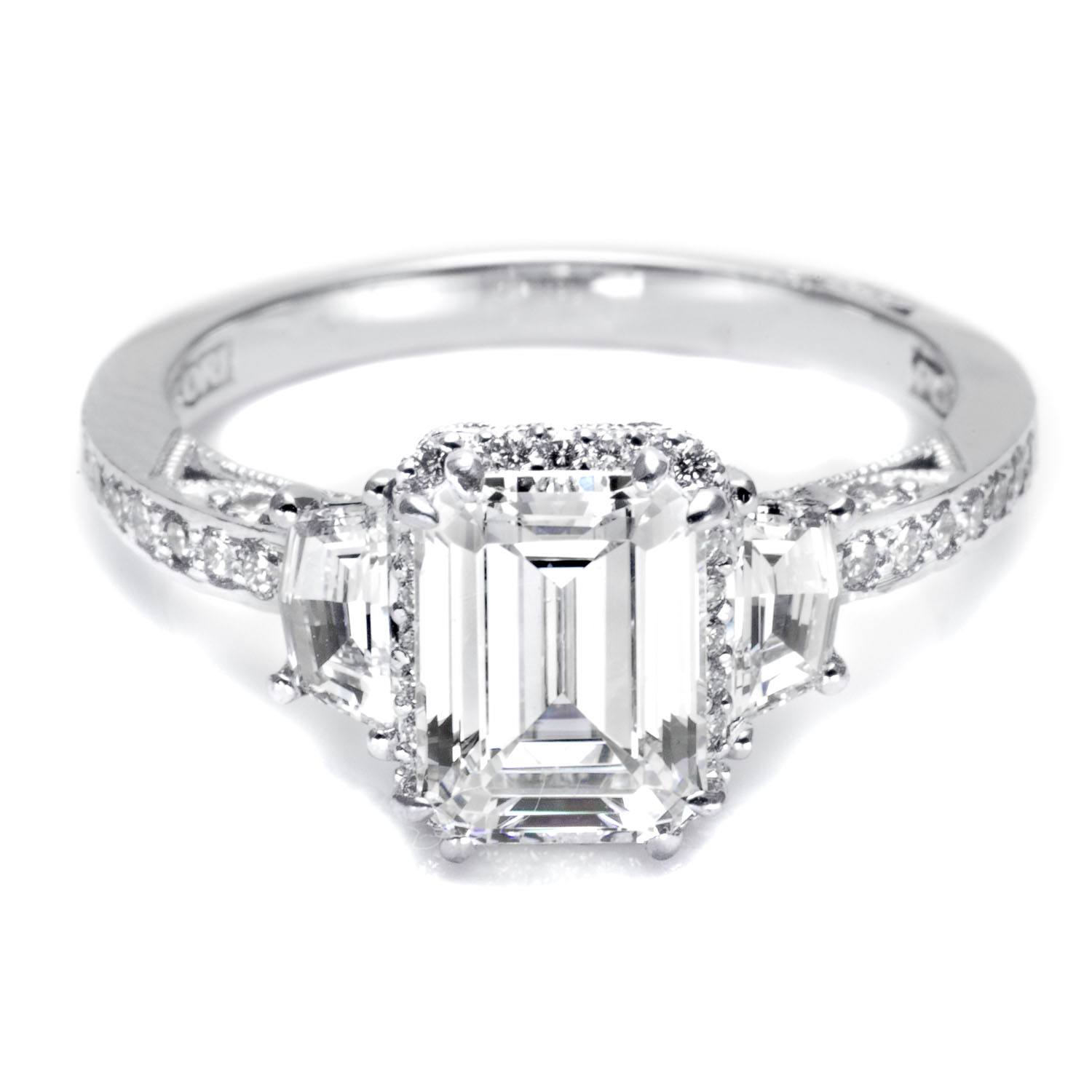
Although the specifications of emerald cuts resemble those of single-cuts of five centuries ago, and the multi-faceted table cuts of the early 20th century, the exact origins of the first emerald cuts remain ambiguous. .
.The use of the term “emerald cut” began during the Art Deco period, although diamond cutters were already cutting the same shape under different names. The cut itself was initially developed for emeralds in order to reduce the amount of pressure exerted during cutting and to protect that fragile gemstone from chipping. In the course of time, emerald cut proved to be suitable for other gemstones, including diamonds, and emerald cut engagement rings. gained in popularity.
The emerald cut is a rectangular shape with truncated corners and a broad and flat plane that resembles stair steps when viewed from above. This style is referred to as a ‘step cut’. The emerald usually comprises 57 facets but the number of rows of facets on both the crown and pavilion can vary, altering the total number of facets for this cut. The emerald-cut typically has less fire and brilliance than brilliant cuts, but the broad flat plane of this shape highlights the clarity of a diamond and the flat planes of the edges allow for a variety of side gemstones such as baguette diamonds.
The vast majority of emerald cuts have length to width ratios between 1.30 and 1.50 with 1.40 considered as the “ideal” ratio.
The shape of the diamond in emerald cut engagement rings is particularly recommendable for ladies with short finger, as rectangular stones give a longer appearance to the fingers!


